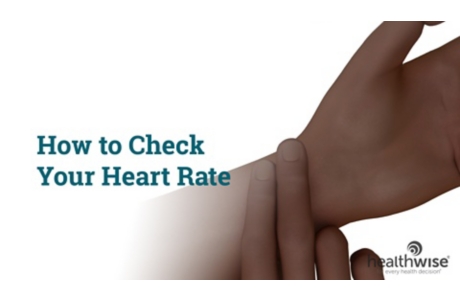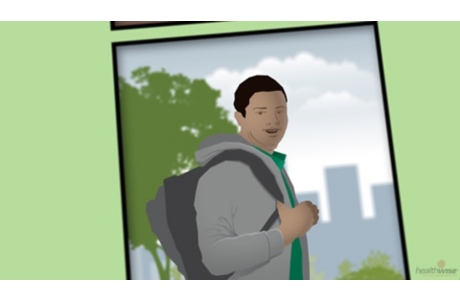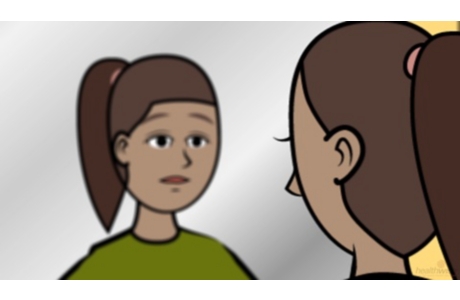How Exercise Helps Children and Teens
Physical activity is key to lifelong health and well-being. Children as young as preschool age benefit from exercise and fitness as much as adults do. Being active helps children and teens to:
- Feel stronger and have more energy to do all the things they like to do.
- Focus better at school and perform better in sports.
- Feel, think, and sleep better.
- Reach and stay at a healthy weight.
- Build lean muscle.
- Lower their risk for serious health problems.
- Keep bones, muscles, and joints strong.
Health Tools
Health Tools help you make wise health decisions or take action to improve your health.
Three Types of Fitness for Children
It's important for children and teens to take part in all three types of activity:
- Aerobic or "cardio" exercise.
-
This kind of exercise strengthens the heart and lungs and builds endurance. Children often get aerobic activity without realizing it. Playing tag, dancing, swimming, and playing catch with friends all provide aerobic exercise. Many schools and communities have programs for soccer, T-ball, and other activities. These are great ways for your child to get aerobic exercise and meet new friends.
- Muscle strengthening.
-
Playing on playground equipment, rope or tree climbing, and gymnastics are just a few examples of activities that tone and strengthen muscles. Certain types of weight training, when properly supervised, may be good choices for older children.
- Bone strengthening.
-
Anything that uses the body to work against gravity, like running, jumping rope, playing hopscotch, and playing basketball, are activities that help with bone growth and strength. Many bone-strengthening activities are also aerobic and muscle-strengthening exercises.
Stretching can also be an important part of your child's activity. It can help increase your child's flexibility. Stretching allows your child to move their muscles and joints through a full range of motion. Show your child how to stretch the muscles. Let your child do simple stretching exercises along with you. Gently correct your child's form when needed so that your child learns good habits.
Helping your child work with weights
Many children show an interest in weights. When properly supervised, some types of weight training for older children are safe and can help prepare them for sports and starting good lifetime fitness habits.
Use these tips when your child works with weights.
- Talk to your child's doctor before your child starts a weight-training program.
This type of exercise is not right for every child.
- Have an adult present who knows how to use weights.
- Be sure your child learns the proper form.
If children don't use proper form, they can hurt themselves. Your child also probably won't get the full benefit of exercising with weights if your child's form is wrong.
- Use only machines that can adjust to your child's size.
- Be sure that your child doesn't compete with other kids or even with their own past efforts.
This can cause your child to push beyond what is safe.
- Be sure your child doesn't move to heavier weights too quickly.
The size of the weight is not important. Your child will get stronger from weight training by doing the right number of repetitions and sets.
Tips for Helping Your Child
One of the very best things you can do for your child's health is to help make physical activity a habit—something that will be a natural part of your child's daily life through adulthood. Here are some things you can do to help your child be active and healthy.
- Stay positive.
It's important for children to have fun, so don't force them to exercise. Instead, find activities that they like to do and will do without being asked.
- Create ways for your child to be active for at least 1 hour each day.
One way to increase your child's activity is to do it in shorter periods of time throughout the day so that it adds up to 1 hour. Encourage your child to do things like running, jumping rope, or playing soccer.
- Plan family activities that involve exercise.
Hike or bike, wash the car, or walk around a mall. Do an online exercise video together. Offer choices, and let your child play.
- Make physical activity part of daily routines.
Walk with your child to do errands, or walk to the bus stop or school, if you can.
- Have your child invite a friend over.
This can be a weekly planned physical activity, such as a bike ride, a water balloon toss, or building a snow fort in the yard.
- Join other families and create "neighborhood" time.
Include group activities like touch football, basketball, or hide-and-seek.
- Let your child try different organized activities.
See what your child enjoys, such as basketball, dance, soccer, or martial arts. Praise your child for doing exercise that they enjoy.
- Talk with your child's caregiver or sitter.
Discuss ways they can encourage your child to be physically active throughout the day.
Organized sports
Organized sports can be a great way to help your child stay active. Here are some tips for involving your child in organized sports.
- Learn about the risks of injuries for that sport and how to prevent them.
The injuries may be different for children than for adults. Help your child prevent sports injuries. If you have concerns, talk to your child's doctor.
- Get to know your child's coach.
Make sure that the coach knows about training safely and how to be safe in hot or cold weather.
- Learn about the coach's style for getting children to learn skills and play well.
You and your child should be comfortable with the coach's style and the coach's skills.
Learn more
Tips for Helping Your Teen
Competitive sports
Competitive sports are a great way for teens to be active while they learn valuable social skills.
Here are tips to help your teen find the right sport.
- Be aware that sports are not for everyone.
- Focus on things that your teen enjoys doing.
It could be competitive or noncompetitive sports. Or your teen may choose personal fitness activities such as jogging, yoga, or cycling. Some teens may prefer individual sports like karate, gymnastics, and swimming rather than group sports like soccer and baseball.
- Help your teen avoid competition that stresses winning over everything else, including sportsmanship and schoolwork.
Avoiding injuries
Any repeated movement or impact can cause an overuse injury. These injuries can cause pain or soreness, inflammation, and even stress fracture of a bone. After an overuse injury has started, it can take weeks to heal. Children and teens are most at risk when their bones are still growing.
Common overuse injuries include carpal tunnel syndrome of the wrist, rotator cuff injury of the shoulder, tennis elbow, Osgood-Schlatter disease of the knee, and plantar fasciitis of the foot.
The following can help your child avoid these injuries.
- Encourage your child to do many different sports instead of focusing on one sport.
- Make sure that your child is using the right technique and equipment.
- Teach your child to pay attention to pain and fatigue.
Pain and tiredness are the body's way of saying "slow down, recover, and heal." Sore muscles are common after a new activity. But pain can be a sign of injury.
- Make sure that your child gets enough rest and nutrition.
- Place a limit on your child's participation in the sport.
The American Academy of Pediatrics (AAP) recommends limiting one sport to no more than 5 days a week with 1 to 2 days off each week from any organized physical activity. Also, the AAP suggests that athletes take off 3 months each year, at least 1 month at a time, from their sport.footnote 1
Learn more
Watch
Related Information
References
Citations
Credits
Current as of: June 5, 2023
Author: Healthwise Staff
Clinical Review Board
All Healthwise education is reviewed by a team that includes physicians, nurses, advanced practitioners, registered dieticians, and other healthcare professionals.
Current as of: June 5, 2023
Author: Healthwise Staff
Clinical Review Board
All Healthwise education is reviewed by a team that includes physicians, nurses, advanced practitioners, registered dieticians, and other healthcare professionals.





